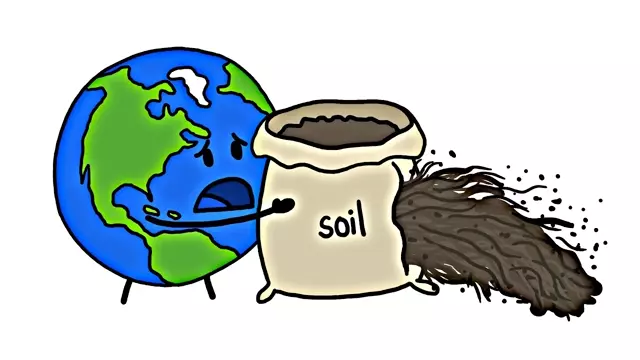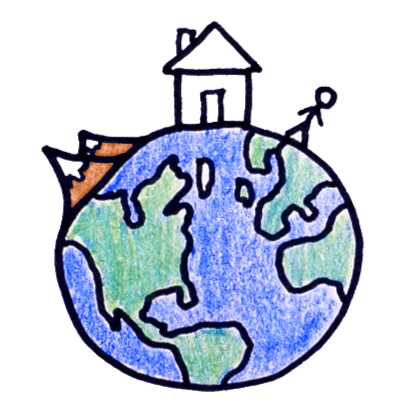2016-08-16
[public] 1.73M views, 28.8K likes, dislikes audio only
Thanks to http://www.soylent.com/earth for sponsoring this video!
Thanks also to our supporters on https://www.patreon.com/MinuteEarth :
- Today I Found Out
- Maarten Bremer
- Jeff Straathof
- Mark Roth
- Tony Fadell
- Muhammad Shifaz
- 靛蓝字幕组
- Melissa Vigil
- Alberto Bortoni
- Valentin
- Antoine Coeur
___________________________________________
Farming erodes soil 50 times faster than it forms. We can change that, but will we?
Credits (and Twitter handles):
Script Writer: Alex Reich (@alexhreich)
Script Editor: Rachel Becker (@RA_Becks)
Video Illustrator: Ever Salazar (@eversalazar)
Video Director: Kate Yoshida (@KateYoshida)
Video Narrator: Kate Yoshida (@KateYoshida)
With Contributions From: Henry Reich, Omkar Bhagat, Emily Elert, Peter Reich, David Goldenberg
Music by: Nathaniel Schroeder: http://www.soundcloud.com/drschroeder
_________________________________________
Like our videos?
Subscribe to MinuteEarth on YouTube: http://goo.gl/EpIDGd
Get early, exclusive access to our videos on Vessel: https://goo.gl/hgD1iJ
Support us on Patreon: https://goo.gl/ZVgLQZ
Also, say hello on:
Facebook: http://goo.gl/FpAvo6
Twitter: http://goo.gl/Y1aWVC
And find us on itunes: https://goo.gl/sfwS6n
___________________________________________
If you liked this week’s video, we think you might also like these things:
America is running out of soil: http://goo.gl/FXEzeR
Global Soil Partnership: http://goo.gl/lqGknM
Prairie STRIPS research: https://goo.gl/1uw1Yg
FYI: We try to leave jargon out of our videos, but if you want to learn more about this topic, here are some handy keywords to get your googling started:
Agricultural Soil Erosion: the wearing away of a field's topsoil by the natural physical forces of water and wind or through forces associated with farming activities, such as tillage. http://goo.gl/d0Ciwk
Conservation tillage/agriculture: a soil cultivation method in which fields are not ploughed & the previous year's crop residues are left on fields before and after planting the next crop, to reduce soil erosion and runoff. http://goo.gl/8aoizx, http://goo.gl/jmj8Ic
Soil: the upper layer of earth, in which plants grow; a dark, damp, gas-filled structure of minerals and organic matter formed by degrading rocks and decomposing organisms. http://goo.gl/Q6JOrH
___________________________________________
References:
A Landowner’s Guide to Prairie Conservation Strips. Accessed May 5, 2016. https://goo.gl/fN65MA
Antón, S. C., & Steadman, D. W. (2003). Mortuary patterns in burial caves on Mangaia, Cook Islands. International Journal of Osteoarchaeology, 13(3), 132-146. http://goo.gl/SIiMxy
FAO and ITPS. (2015). Status of the World’s Soil Resources (SWSR) – Main Report. Food and Agriculture Organization of the United Nations and Intergovernmental Technical Panel on Soils, Rome, Italy. http://goo.gl/fxPJi0
Kirch, P. V. (1997). Microcosmic histories: Island perspectives on" global" change. American Anthropologist, 99(1), 30-42.
Montgomery, D. R. (2007). Soil erosion and agricultural sustainability. Proceedings of the National Academy of Sciences, 104(33), 13268-13272. http://goo.gl/Si9E6g
Pimentel, D. (2006). Soil erosion: a food and environmental threat. Environment, development and sustainability, 8(1), 119-137. http://goo.gl/64FSCa
Soil Building Systems. Pickup Truck Capacities. Accessed May 5, 2016. http://goo.gl/u7sPfQ
Steadman, D. W., Antón, S. C., & Kirch, P. V. (2000). Ana Manuku: a prehistoric ritualistic site on Mangaia, Cook Islands. Antiquity, 74(286), 873-883. http://goo.gl/ZySytn
https://www.patreon.com/minuteearth
/youtube/channel/UCeiYXex_fwgYDonaTcSIk6w
https://www.patreon.com/minuteearth
/youtube/video/4DF94Wvtekk

